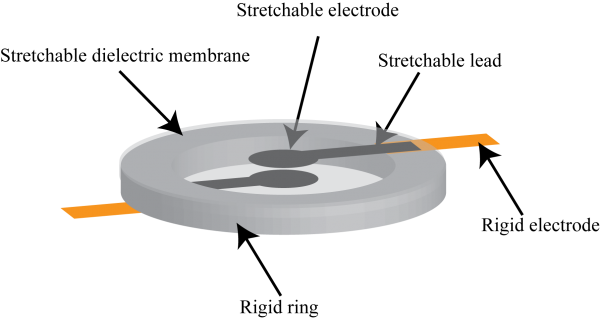The dielectric elastomer actuators documented in this section consist of a soft, prestretched, dielectric membrane that is attached to a rigid circular frame. This section describes the overall design of the actuators as well as some of the design considerations involved in making your own actuator.

Circular stretchable electrodes made of carbon grease are painted in the center of the membrane on both faces. Each electrode is connected to the edge of the membrane through stretchable leads also made of carbon grease, but painted in opposite directions to avoid overlap of the two leads. At the rigid frame, the stretchable leads are interfaced with the environment through metallic electrodes made using copper tape. Upon application of a voltage the circular electrodes expand and the membrane decreases in thickness.
This design presented here is far from the only design possible for dielectric elastomer actuators. In fact, the working principle of dielectric elastomer actuators allows for a large number of different designs. The type of actuator described here is often used as a reference design to study the influence of material parameters such as electric constant, stiffness, and viscoelasticity on actuation performance. In addition, the influence of varying the prestretch, actuation voltage and actuation frequency can easily be investigated with this type of actuator. See the sections on material and morphology variations for discussions of how varying some of these design parameters affect the performance of the final design.
